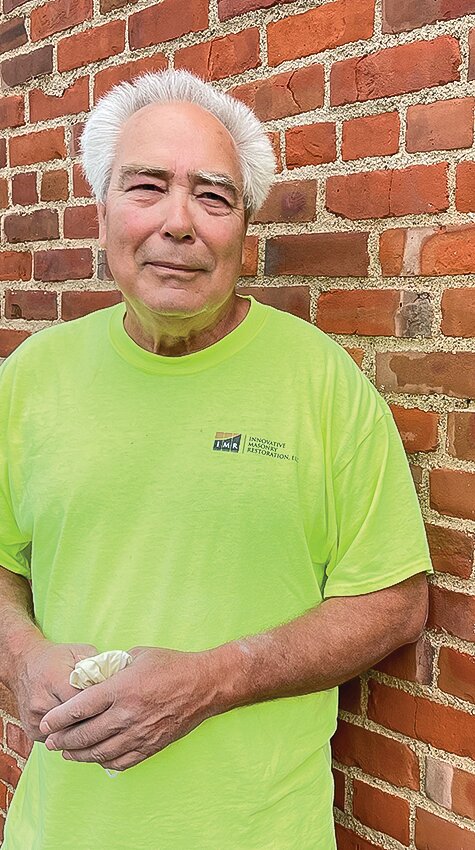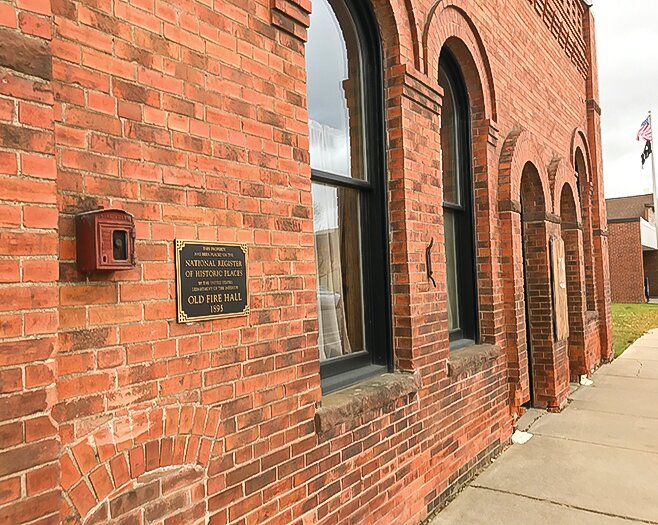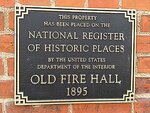Support the Timberjay by making a donation.
Labor of love
For restoration masons, it’s all about bricks and mortar
TOWER— To most people, the work that’s been underway for weeks at the former city and fire hall on Main Street here appears painstaking at best. Masons have been working brick-by-brick on …
This item is available in full to subscribers.
Attention subscribers
To continue reading, you will need to either log in to your subscriber account, or purchase a new subscription.
If you are a current print subscriber, you can set up a free website account and connect your subscription to it by clicking here.
If you are a digital subscriber with an active, online-only subscription then you already have an account here. Just reset your password if you've not yet logged in to your account on this new site.
Otherwise, click here to view your options for subscribing.
Please log in to continue |
Labor of love
For restoration masons, it’s all about bricks and mortar
TOWER— To most people, the work that’s been underway for weeks at the former city and fire hall on Main Street here appears painstaking at best. Masons have been working brick-by-brick on the nearly 130-year-old building patiently drilling out all the old mortar, fitting in new bricks to replace missing or damaged pieces, and then carefully applying new mortar around every single piece.
Few of us would likely have the patience to undertake a task that could seem both tedious and exacting. But to those who toil at this work day-in and day-out, it’s quite literally a labor of love.
“I just do what I love to do,” said Lenny Bogucki, who has repaired brick buildings for 43 years. “I’m up on a wall and working. It’s a good career. I’ve never had to look for work.”
Another bonus of doing this type of work in Minnesota? You get winters off.
“It gets too cold,” said Bogucki, who lives in Ogilvie. “So, I get laid off and have plenty of time for ice fishing.”
Bogucki is certainly a veteran at his craft, but another member of the crew, Chuck Cusano, has him beat. Cusano, who hails from Blackburn, Mo., has been working in the trade since 1977. He started as a union apprentice and spent his career with brickwork. He did try retiring, but after his wife passed away, he decided to go back to work.
“This is so rewarding,” he said. “I like working on these old buildings. We are bringing these buildings back to life.”
Bogucki said it was a testament to the original masons that this building has stood solidly for over 100 years, especially through Tower’s harsh winters.
“You have to love this old brickwork,” he said. “It was very hard to do this so well back in the 1890s.”
Bogucki started in the field doing chimney repair, but soon was working on all sorts of brick buildings.
“I used to hang off 30-story high buildings doing this type of work,” he said. “But I can’t do that anymore!” He’s worked on historic mansions in St. Paul, the courthouse in Owatonna, and had a year-long gig at the Jefferson Memorial Courthouse, the building underneath the famous arch in St. Louis.
While Bogucki and Cusano are the veterans on the crew working to renovate Tower’s historic Old Fire Hall, they were also working alongside a group of younger masons.
“This crew is the best, Bogucki said. “They are all super talented. And these young kids work so hard.”
The crew works for Innovative Masonry Restoration (IMR), which has offices in Minneapolis and Kansas City. They are one of only a few companies that specialize in the restoration of historic buildings, with the ability to match original brick and mortar styles to preserve the historic integrity of buildings like the old fire hall.
Historical accuracy
Since the Old Fire Hall is on the National Register of Historic Places, any work done must be approved by the Minnesota Historical Society. The building was purchased in 2015 by the Tower-Soudan Historical Society (TSHS) from Tim Kotzian and Chuck Cathcart, who purchased the building in the 1980s with the plan to preserve that piece of Tower’s history. Kotzian did essential work needed to stabilize the building’s foundation but was unable to secure the large amount of funding needed to repair all the brickwork.
TSHS, a nonprofit, has been able to use grant funding, along with money raised locally, to preserve the building, something that a private owner would have had difficulty doing.
“The work Tim Kotzian did on the building kept it structurally sound,” said Leone Graf, who is overseeing the project for the TSHS.
The fire hall, which also served as Tower’s City Hall, police station, and jail, was constructed in 1895 and is the oldest public building north of Duluth. In the late 1980s, the Minnesota Historical Society nominated the building for a place on the National Register.
“They were concerned about so many of the old buildings being torn down,” said Nancy Larson, a TSHS board member. “They sent teams out to survey old buildings in northern Minnesota.”
TSHS has been working since they acquired the building to preserve it, which has turned out to be a major project, starting with finding architectural firms with the expertise to design the work needed.
Before the masonry work could begin, testing was done on the original bricks and mortar, so that the materials used in the restoration were as authentic as possible.
“The mortar was made of pure lime,” said Graf, “not the harder Portland cement that started coming into use in the later 1880s.”
Portland cement set up faster than lime, which meant more bricks could be laid in a single day.
The new mortar installed was a modified lime mortar, which was a new type, and had to be approved by the MHS.
“They went through a full test to see how strong it was compared to the bricks,” she said. “The mortar needs to be weaker than the bricks.”
The bricks used in the building were considered “weak bricks,” she said.
“Mortar has always been considered expendable,” Graf said. “Bricks are considered permanent.”
Foundation proves solid
The big wild card in the entire project was the condition of the building’s foundation, which was only revealed this summer as the crew completed the exterior brick work.
“I was really fearful of what they would find on the foundation,” Graf said. “I was having nightmares.”
Larson echoed that concern, because as the grant writer for the project, she would have needed to find considerable new funding for any foundation repairs.
But to everyone’s relief, the foundation was in “wonderful” condition.
The main concern was on the west wall, which had shown the most brick damage. The building had only about a foot clearance between it and the now-demolished building that was adjacent. This meant that moisture tended to be trapped, leading to more freeze/thaw damage on the exterior, and a big question mark about what it meant for the foundation itself.
When soil was removed to examine the foundation, they found the foundation of the adjacent building was set directly next to the fire hall’s foundation, and the foundation was in good shape.
“It kept it stable,” Graf said, noting that she is not sure modern engineers would have approved of such a situation.
“Their attitude might be to take it out and replace it with something they know,” she said. “In Europe they run into these type of situations all the time, and understand it more.”
What’s to come
The interior and exterior masonry repairs will be completed this month, except for work needed on the rear/south wall, which needs extensive repair work. Plans are to install a large arched doorway, to match the front, which would also allow the city’s steam-powered fire engine, the Tippett, to be moved in and out.
“Future plans are to restore the Tippett,” said Larson. “It’s a city asset.”
The goal would be to get the antique fire engine’s metal wheels working again, so it could be pulled by horses, as it was designed to do, in the Fourth of July parade. The steam engine would also be on permanent display in the fire hall. But the building, once completed, will not just tell the story of fire fighting.
“This is a much bigger story than a fire hall,” said Larson. “This is a story about the beginning of the Iron Range.”
Installing new heating and electrical systems in the building, as well as repairing the interior metal ceiling, are next on the list.
TSHS envisions using the building for community gatherings, history displays, as well as renting out some of the space for commercial businesses.
“This is the start of a new beginning for Tower,” said Graf, who noted the planned developments in the harbor area will complement this work also.
With the repairs undertaken this summer, the building should continue to stand the test of time. Bogucki said it should easily stand strong for another 100-plus years. All of which makes the painstaking efforts of his crew well worth it.















